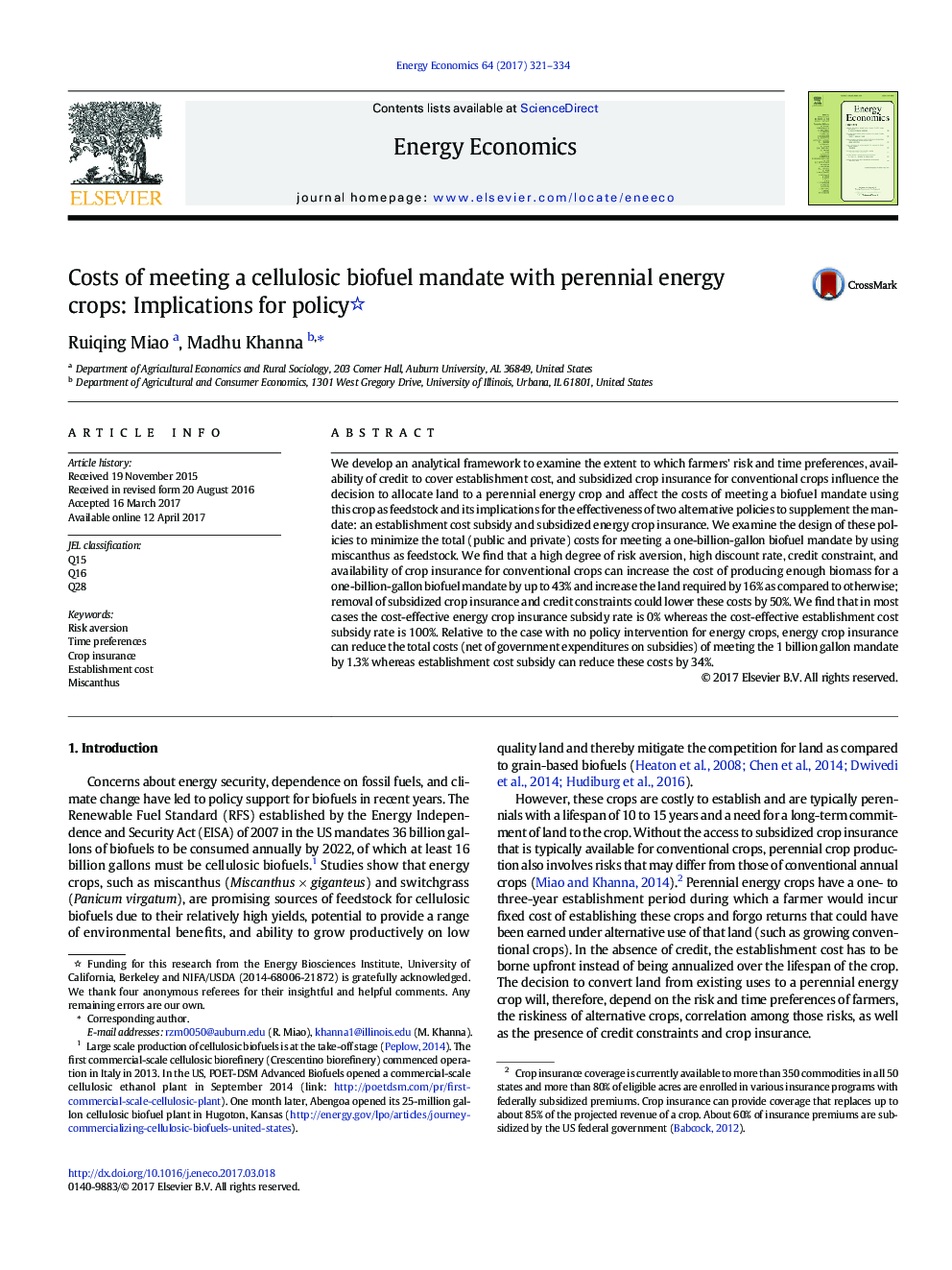| کد مقاله | کد نشریه | سال انتشار | مقاله انگلیسی | نسخه تمام متن |
|---|---|---|---|---|
| 5063685 | 1476700 | 2017 | 14 صفحه PDF | دانلود رایگان |
- A high degree of risk aversion, high discount rate, credit constraints for financing establishment of perennial energy crops and availability of crop insurance for conventional crops can increase the cost of producing biomass.
- Removal of subsidized crop insurance for conventional crops and credit constraints could lower the cost of producing biofuels.
- In most cases the cost-effective energy crop insurance premium subsidy rate is 0% while the cost-effective establishment cost subsidy rate is 100%.
We develop an analytical framework to examine the extent to which farmers' risk and time preferences, availability of credit to cover establishment cost, and subsidized crop insurance for conventional crops influence the decision to allocate land to a perennial energy crop and affect the costs of meeting a biofuel mandate using this crop as feedstock and its implications for the effectiveness of two alternative policies to supplement the mandate: an establishment cost subsidy and subsidized energy crop insurance. We examine the design of these policies to minimize the total (public and private) costs for meeting a one-billion-gallon biofuel mandate by using miscanthus as feedstock. We find that a high degree of risk aversion, high discount rate, credit constraint, and availability of crop insurance for conventional crops can increase the cost of producing enough biomass for a one-billion-gallon biofuel mandate by up to 43% and increase the land required by 16% as compared to otherwise; removal of subsidized crop insurance and credit constraints could lower these costs by 50%. We find that in most cases the cost-effective energy crop insurance subsidy rate is 0% whereas the cost-effective establishment cost subsidy rate is 100%. Relative to the case with no policy intervention for energy crops, energy crop insurance can reduce the total costs (net of government expenditures on subsidies) of meeting the 1 billion gallon mandate by 1.3% whereas establishment cost subsidy can reduce these costs by 34%.
Journal: Energy Economics - Volume 64, May 2017, Pages 321-334
